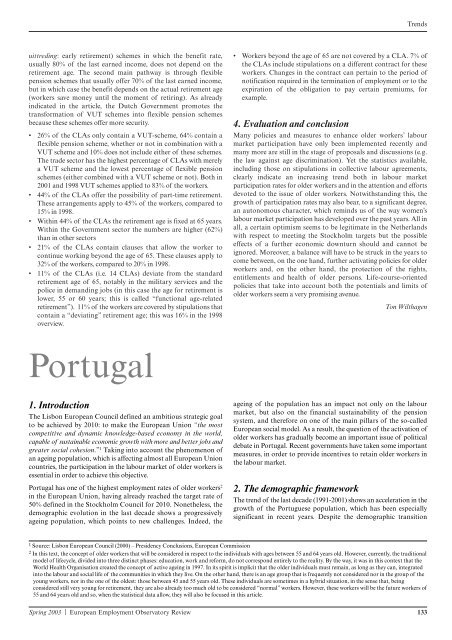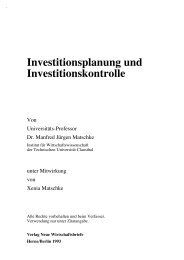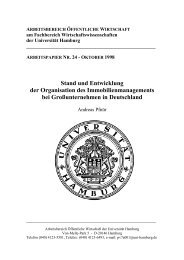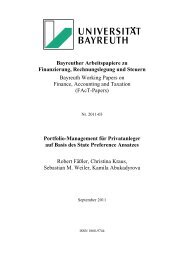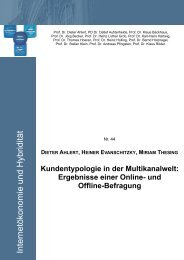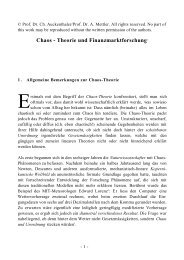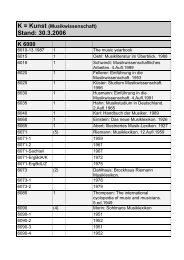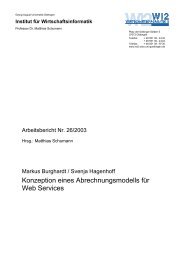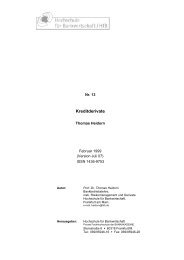FRANCE The
FRANCE The
FRANCE The
Create successful ePaper yourself
Turn your PDF publications into a flip-book with our unique Google optimized e-Paper software.
uittreding: early retirement) schemes in which the benefit rate,<br />
usually 80% of the last earned income, does not depend on the<br />
retirement age. <strong>The</strong> second main pathway is through flexible<br />
pension schemes that usually offer 70% of the last earned income,<br />
but in which case the benefit depends on the actual retirement age<br />
(workers save money until the moment of retiring). As already<br />
indicated in the article, the Dutch Government promotes the<br />
transformation of VUT schemes into flexible pension schemes<br />
because these schemes offer more security.<br />
• 26% of the CLAs only contain a VUT-scheme, 64% contain a<br />
flexible pension scheme, whether or not in combination with a<br />
VUT scheme and 10% does not include either of these schemes.<br />
<strong>The</strong> trade sector has the highest percentage of CLAs with merely<br />
a VUT scheme and the lowest percentage of flexible pension<br />
schemes (either combined with a VUT scheme or not). Both in<br />
2001 and 1998 VUT schemes applied to 83% of the workers.<br />
• 44% of the CLAs offer the possibility of part-time retirement.<br />
<strong>The</strong>se arrangements apply to 45% of the workers, compared to<br />
15% in 1998.<br />
• Within 44% of the CLAs the retirement age is fixed at 65 years.<br />
Within the Government sector the numbers are higher (62%)<br />
than in other sectors<br />
• 21% of the CLAs contain clauses that allow the worker to<br />
continue working beyond the age of 65. <strong>The</strong>se clauses apply to<br />
32% of the workers, compared to 20% in 1998.<br />
• 11% of the CLAs (i.e. 14 CLAs) deviate from the standard<br />
retirement age of 65, notably in the military services and the<br />
police in demanding jobs (in this case the age for retirement is<br />
lower, 55 or 60 years; this is called “functional age-related<br />
retirement”). 11% of the workers are covered by stipulations that<br />
contain a “deviating” retirement age; this was 16% in the 1998<br />
overview.<br />
Portugal<br />
1. Introduction<br />
<strong>The</strong> Lisbon European Council defined an ambitious strategic goal<br />
to be achieved by 2010: to make the European Union “the most<br />
competitive and dynamic knowledge-based economy in the world,<br />
capable of sustainable economic growth with more and better jobs and<br />
greater social cohesion.” 1 Taking into account the phenomenon of<br />
an ageing population, which is affecting almost all European Union<br />
countries, the participation in the labour market of older workers is<br />
essential in order to achieve this objective.<br />
Portugal has one of the highest employment rates of older workers 2<br />
in the European Union, having already reached the target rate of<br />
50% defined in the Stockholm Council for 2010. Nonetheless, the<br />
demographic evolution in the last decade shows a progressively<br />
ageing population, which points to new challenges. Indeed, the<br />
Spring 2003 | European Employment Observatory Review 133<br />
Trends<br />
• Workers beyond the age of 65 are not covered by a CLA. 7% of<br />
the CLAs include stipulations on a different contract for these<br />
workers. Changes in the contract can pertain to the period of<br />
notification required in the termination of employment or to the<br />
expiration of the obligation to pay certain premiums, for<br />
example.<br />
4. Evaluation and conclusion<br />
Many policies and measures to enhance older workers’ labour<br />
market participation have only been implemented recently and<br />
many more are still in the stage of proposals and discussions (e.g.<br />
the law against age discrimination). Yet the statistics available,<br />
including those on stipulations in collective labour agreements,<br />
clearly indicate an increasing trend both in labour market<br />
participation rates for older workers and in the attention and efforts<br />
devoted to the issue of older workers. Notwithstanding this, the<br />
growth of participation rates may also bear, to a significant degree,<br />
an autonomous character, which reminds us of the way women’s<br />
labour market participation has developed over the past years. All in<br />
all, a certain optimism seems to be legitimate in the Netherlands<br />
with respect to meeting the Stockholm targets but the possible<br />
effects of a further economic downturn should and cannot be<br />
ignored. Moreover, a balance will have to be struck in the years to<br />
come between, on the one hand, further activating policies for older<br />
workers and, on the other hand, the protection of the rights,<br />
entitlements and health of older persons. Life-course-oriented<br />
policies that take into account both the potentials and limits of<br />
older workers seem a very promising avenue.<br />
Ton Wilthagen<br />
ageing of the population has an impact not only on the labour<br />
market, but also on the financial sustainability of the pension<br />
system, and therefore on one of the main pillars of the so-called<br />
European social model. As a result, the question of the activation of<br />
older workers has gradually become an important issue of political<br />
debate in Portugal. Recent governments have taken some important<br />
measures, in order to provide incentives to retain older workers in<br />
the labour market.<br />
2. <strong>The</strong> demographic framework<br />
<strong>The</strong> trend of the last decade (1991-2001) shows an acceleration in the<br />
growth of the Portuguese population, which has been especially<br />
significant in recent years. Despite the demographic transition<br />
1 Source: Lisbon European Council (2000) – Presidency Conclusions, European Commission<br />
2 In this text, the concept of older workers that will be considered in respect to the individuals with ages between 55 and 64 years old. However, currently, the traditional<br />
model of lifecycle, divided into three distinct phases: education, work and reform, do not correspond entirely to the reality. By the way, it was in this context that the<br />
World Health Organisation created the concept of active ageing in 1997. In its spirit is implicit that the older individuals must remain, as long as they can, integrated<br />
into the labour and social life of the communities in which they live. On the other hand, there is an age group that is frequently not considered nor in the group of the<br />
young workers, nor in the one of the oldest: those between 45 and 55 years old. <strong>The</strong>se individuals are sometimes in a hybrid situation, in the sense that, being<br />
considered still very young for retirement, they are also already too much old to be considered “normal” workers. However, these workers will be the future workers of<br />
55 and 64 years old and so, when the statistical data allow, they will also be focused in this article.


